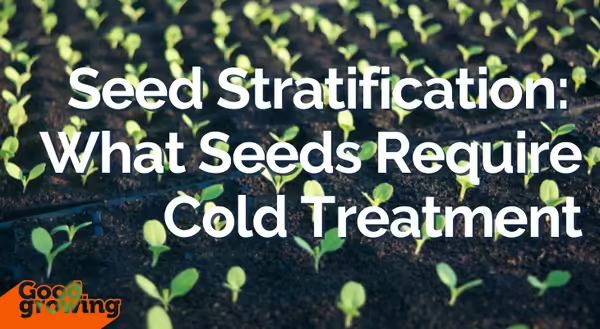
Have you ever planted seeds, and nothing sprouted? This could be the result of many different things such as soil moisture, seed viability, soil temperature, planting depth, and many other factors; however, not all seeds are ready to sprout as soon as they are planted in soil. Some seeds require a temperature change to trigger the end of a dormancy (or sleep) period; this process is called stratification.
What is stratification and why do seeds need it?
Stratification occurs naturally when seeds are sown outdoors through the cold winter. It is a survival mechanism so the seed does not prematurely germinate.
Many plants require a period of cold temperatures to break their dormancy cycle with woody plants and herbaceous perennials being some of the more common species. Some popular plants that require stratification include many of the Milkweed species, Purple Coneflower, False Indigo, Black-Eyed Susan, Flowering Dogwood, Redbud, and many others. Many times, seed packets will let us know if there is a cold period requirement for germination, but it is always a good idea to research any germination needs; especially when it comes to collecting and saving seeds.
How to stratify seeds indoors
If you’re like me and failed to get your seeds planted this last fall, we can still grow them this spring by mimicking the required conditions indoors.
- Place seeds in a moistened paper towel, sand, peat, or vermiculite in a closed container or sealed plastic bag.
- The stratification process can require cold or heat
- Cold stratification: Put the container in the refrigerator at 33°F to 40°F
- Warm stratification: Store the container where the temperature is between 68°F and 85°F
- Leave it for one to three months.
- Check the seeds periodically for excess moisture
- After removing the seed from storage, sow it into pots or direct-seed it outside if conditions are suitable.
Note that the length of time needed to stratify depends on the plant species. This period typically varies from one to three months.
It is important to check your seeds occasionally to make sure there is still some moisture in the container but not too much which can cause mold. You can also check the seeds periodically to see if they are sprouting; sprouted seeds can be planted.
Good Growing Tip: Don’t wait too long to start seeds that require a cold period. Depending on the required period of stratification, it can add one to three months when starting seeds.
Signup for our emails! Want to get notified when new Good Growing posts are available? SIGN ME UP
WRITTEN BY
Katie Parker, former Local Food Systems and Small Farms educator with University of Illinois Extension.